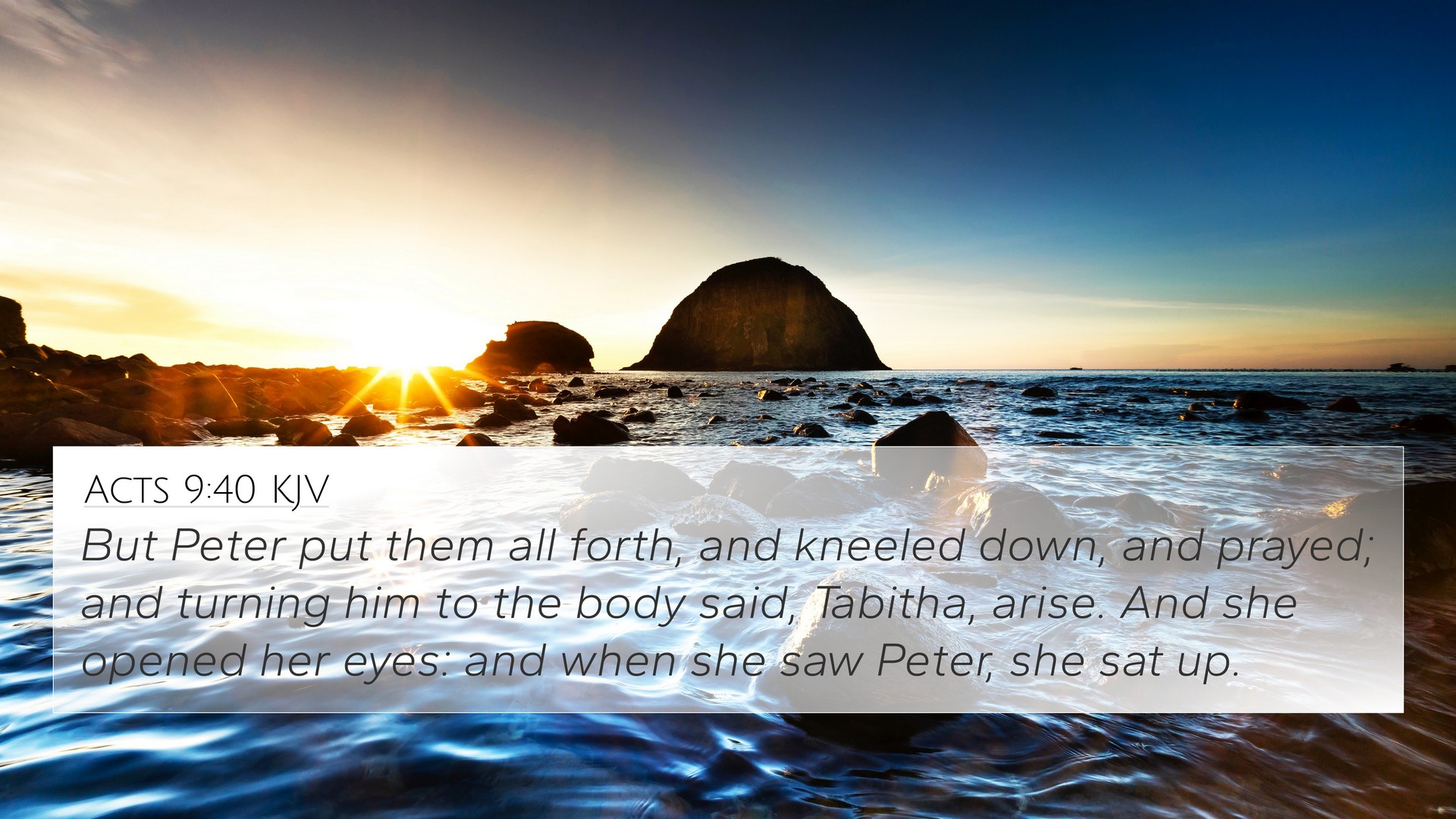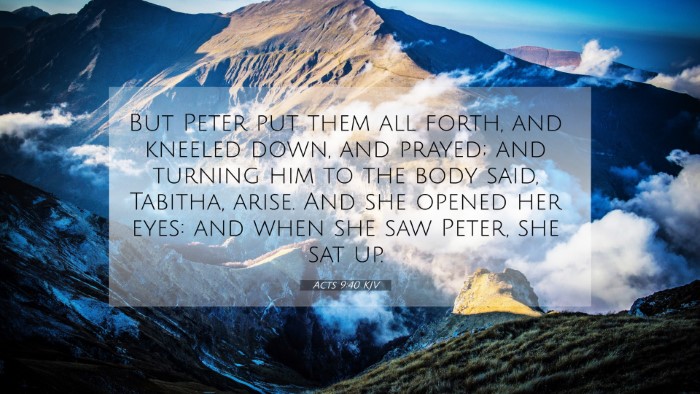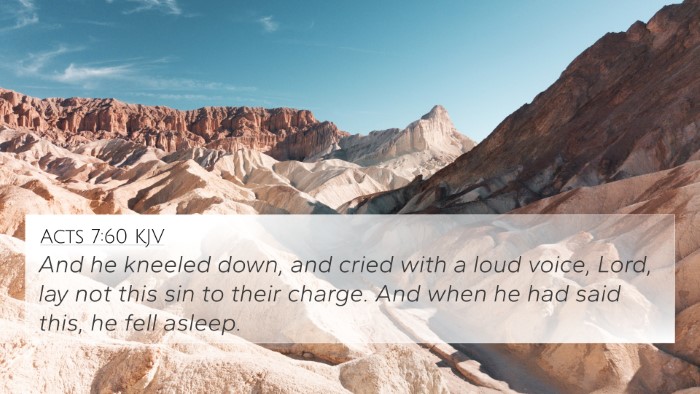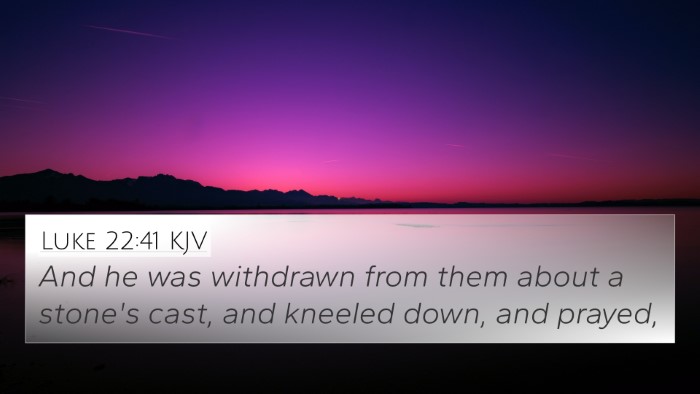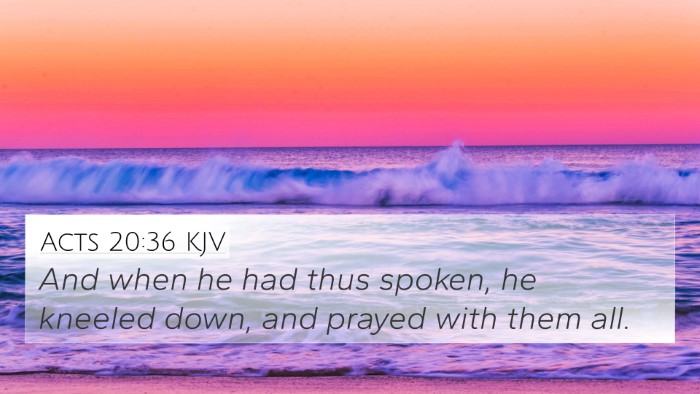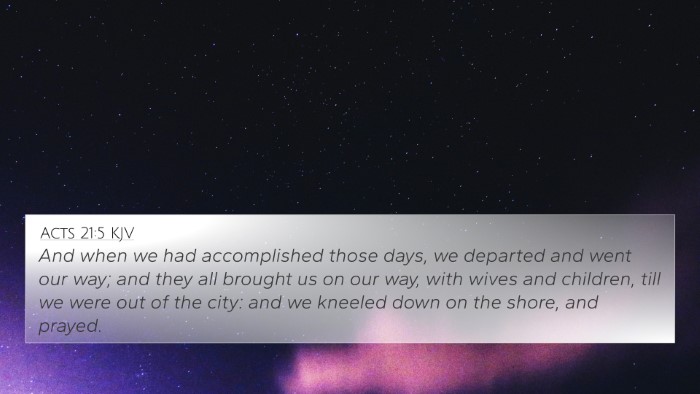Understanding Acts 9:40
Acts 9:40: "But Peter put them all forth, and kneeled down, and prayed; and turning him to the body said, Tabitha, arise. And she opened her eyes: and when she saw Peter, she sat up."
This verse describes a miraculous event in the life of the Apostle Peter as he raised Tabitha (also known as Dorcas) from the dead. In this context, it is vital to explore the implications and connections of this scripture within the broader biblical narrative.
Summary of Acts 9:40
The act of raising Tabitha is reflective of Peter's authority as an apostle, showcasing the power of faith and prayer in the early Christian church. Through this miracle, we witness not only the reverence and humility of Peter as he prays, but also the immediate response of Tabitha to his command. This event serves to strengthen the faith of the witnesses and illustrates the divine power manifesting through the apostles.
Commentary Insights
-
Matthew Henry:
Henry emphasizes that Peter's actions were marked by earnest prayer before performing the miracle. It underscores the importance of seeking God's guidance and power in performing acts of faith. The act of bodily resurrection further signifies the hope and continuing works of Jesus through His apostles.
-
Albert Barnes:
Barnes notes that the raising of Tabitha illustrates the apostolic authority given to Peter, reminiscent of Christ’s miracles. He highlights the transformation and astonishment of the community that witnessed this miracle, reinstating the power of prayer combined with faith.
-
Adam Clarke:
Clarke provides insight into the character of Tabitha, known for her good works and acts of charity. He suggests that her resurrection emphasizes the importance of service in the Christian community and how such acts are honored by God.
Connections with Other Bible Verses
Acts 9:40 is rich in intertextual connections, revealing themes of resurrection, faith, and divine authority. Below are notable cross-references that highlight these connections:
- John 11:43-44: The resurrection of Lazarus, showcasing Christ’s authority over death.
- Matthew 10:8: Jesus instructs His disciples to heal the sick and raise the dead, indicating the power given to them.
- Acts 3:6: Peter heals a lame man, demonstrating the same divine power at work through him.
- 1 Thessalonians 4:16: The promise of resurrection for believers, affirming the hope of eternal life.
- Luke 8:54-55: The raising of Jairus’ daughter, another parallel of Jesus’ power over death.
- Mark 16:17-18: Jesus promises signs to follow believers, which includes healing and miraculous acts.
- Hebrews 11:35: References to women receiving their dead raised to life, acknowledging faith in resurrection.
Thematic Bible Verse Connections
There are several thematic connections in the narrative of Acts 9:40 that strengthen its contextual understanding:
- Faith and Prayer: The significance of prayer before performing miracles is reiterated throughout the Bible, from the prayers of the Old Testament prophets to the New Testament teachings on faith.
- Community and Service: Tabitha’s life as a servant illustrates the value God places on service and charity, which are core themes in the teachings of Jesus.
- God’s Power in the Church: The empowerment of the apostles showcases the early church’s reliance on God’s miraculous ability to affirm their ministry.
Cross-Referencing Biblical Texts
Utilizing cross-referencing tools for deeper study reveals numerous interconnected themes and messages throughout scripture. It facilitates a broader understanding of how the resurrection of Tabitha resonates with the overall message of hope central to Christianity.
Conclusion
Acts 9:40 stands as a powerful testament to faith, resurrection, and divine authority. By leveraging cross-referencing strategies, believers and scholars can explore the interconnectedness of various biblical themes and better understand the narrative of God’s continual intervention in human affairs.
